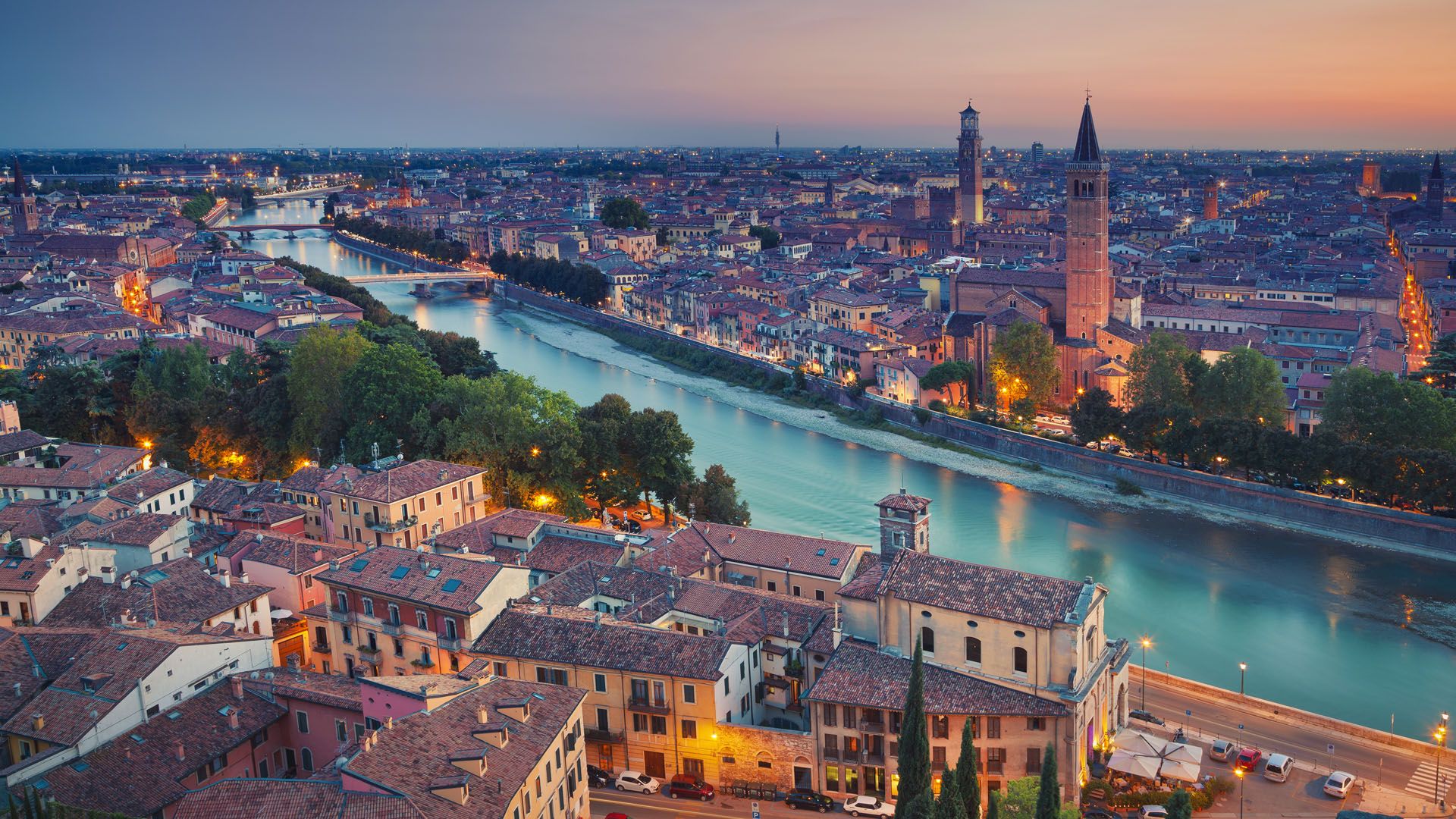How to visit Italy in 10 days
Read on for detail on a few practical matters that’ll help you enjoy an unforgettable vacation in Italy.
When to visit Italy
In our experience, the best time to visit Italy is in spring or early autumn i.e. just before the peak period summer period (July and August), or just after it.
During the summer high season, the weather is intensely hot in pretty much every area of Italy, with huge visitor numbers adding to that intensity.
Conversely, visiting in the shoulder-season spring months of April and May means the weather will generally be warm and sunny — ideal for exploring cities, walking on the wilder side in the countryside, and early beach breaks — before the over-congestion of summer strikes.
I also personally rate visiting Italy in early October — the colors are gloriously golden, and the attractions are gloriously less crowded!
How to get around Italy
Here's an overview of how to get around Italy.
By train
Italy’s extensive train network is often the most convenient way to travel between cities and towns, with high-speed trains like Frecciarossa and Italo connecting major cities in just a few hours, and regional trains covering smaller towns.
By bus
Offering affordable travel across Italy — and reaching smaller towns and villages that aren’t served by the train network — long-distance bus routes run by FlixBus and Itabus will be of interest to travelers on a tight budget.
By car
While renting a car certainly offers flexibility — important if you’re looking to cover a lot of ground on a longer trip, or plan to explore rural areas — bear in mind that traffic in cities can be challenging, and parking can be limited.
By plane
Alitalia and budget airlines like Ryanair operate speedy routes that connect cities like Rome, Milan, Venice, Naples, and Palermo.
While you’ll save time on longer flight routes (such as flying from Rome to Sicily), as airports tend to be outside city centers, when you factor in traveling to and from airports — and checking-in — the train might work out better.
Cost of a 10-day trip
While the cost of a 10-day trip to Italy will very much depend on your travel style, here’s a breakdown of what you can expect for a mid-range experience.
- Accommodation: expect to pay $100–$150 night to stay in mid-range hotels and guesthouses.
- Food: it’ll set you back around $15–$30 per meal to dine in decent local restaurants.
- Activities: across your ten-day trip, allow $150–$200 to cover entrance fees and a couple of tours.
- Transport: if you’re traveling within a city using local buses and the metro, expect to pay $50–$100 across your 10-day trip. High-speed train tickets between cities like Rome, Florence and Venice will set you back $30–$50 each way.
Bearing all that in mind, you could be looking at a budget of $1700-$3000.
Do you need a visa?
Good news — if you’re staying in Italy for less than 90 days, you don’t need a visa. Just check your passport is valid for at least three months beyond your planned departure date.
You may also be asked to show proof of return or onward travel.
Is 10 days enough?
As revealed by this itinerary, having ten days in Italy can enable you to see tons of iconic sights. In this case, from Rome to Venice via Florence, the Cinque Terre and Verona.
Whether you feel it's enough time is likely to depend on how deep the country gets under your skin.
As you plan your trip, it’s a question of deciding how much ground you want to cover versus the joys of spending longer in each of your chosen destinations.
While some of us long to see as many different places as possible in a given timeframe, others prefer to travel slower, and more immersively. If that sounds like you, try to extend your stay to 14 days.
Conversely, if you’re really short on time, we’ve also devised a rewarding 7-day Italy itinerary.
Italy in 7 days
If you have seven days in Italy, you could, of course, decide to devote your entire week to one location, maybe taking a few day trips from your base.
For example, Tivoli, Ostia and the Tuscan Hills are among the best day trips from Rome, while Pisa, Verona, Siena and Bologna can all be easily visited from Florence.
Alternatively, follow our unforgettable Italy itinerary for 7 days for those discovering Rome, Florence, Venice (and more) for the first time in one vacation.
Italy in 14 days
Having 14 days in Italy makes matters easier and trickier at the same time i.e. while having more time means opportunities for more experiences, you might be hard pressed to decide how to focus your trip.
My personal choice would be to start in Rome and then head south to Naples and the Amalfi Coast.
Naples is a wonderful base for visiting Vesuvius, Pompeii and scenic Sorrento, and to take trips to idyllic islands — Ischia was my favorite, closely followed by Capri.
You’ll also have time to experience Naples’ more unusual side, and to eat very well in the city that claims to have invented pizza.
Putting my Naples bias aside, another great option is to focus your 14 days on a Grand Tour of northern Italy that covers Venice, the Cinque Terre, Milan and Florence.
For more itinerary ideas — and to be freed from the hassle of planning and booking — browse our customizable Italy itineraries.











